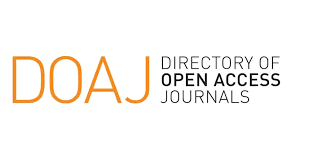Female Education and Employment in Nigeria
DOI:
https://doi.org/10.36881/ma.v2i2.788Keywords:
Skilled employment, Unskilled employment, Education, Wealth indexAbstract
This paper examined female education and employment in Nigeria. The 2018 Nigeria Demographic and Health Survey data (NDHS, 2018) was used. After sorting out for missing data, 28,494 women’s individual data were used. Data were analyzed using descriptive statistics and Multinomial logit regression. Only 0.3% of women in Nigeria are unemployed while 99.7% are employed in skilled and unskilled jobs. However, only 13.4% of the women are engaged in skilled employment; 8.5% are in professional/technical/managerial jobs while 4.9% are involved in skilled manual. The majority (86.3%) are in the unskilled manual employment category; 1.6% in clerical, 49.4% in sales, 9.5% in services, 0.1% in unskilled manual and 25.7% in Agriculture. The likelihood of being involved in professional/technical/managerial employment by women in Nigeria increases with age (0.06), region {North West (1.18), South West (1.87}, educational level {secondary (0.68), tertiary (1.64)}, wealth index{richer (0.90), richest(0.95)}. On the other hand, the likelihood of being engaged in professional/technical/managerial employment type reduces with large household size >10persons (-0.71). Engagement of women in skilled employment types are driven by education while education discourages them in engaging in unskilled employment types. However, because the highest proportion of the women have secondary education, they are found more in the unskilled employment types. Also, engagement in skilled employment types is driven by wealth index while age drives skilled and unskilled employment types. Nigerian women are not much involved in skilled employment, the right policy should be put in place to educate girls beyond the secondary education level and enlighten them on the need to be involved in skilled employment.
Downloads
References
Anyanwu, J. C. (2010). Poverty in Nigeria: A gendered analysis. African Statistical Journal, 11(11), 38-61.
Arrow, K. (1973) "The Theory of Discrimination", in AshenfelterOrley and Rees All, (ed.), Discrimination in Labour Markets, N.J: Princeton University Press, Princeton, 3-33. Becker, G. S. (2010). The economics of discrimination. University of Chicago press. https://books.google.com.ng/books?
Arrow, K. J. (2014). The Theory Of Discrimination. Annals of Economics and Finance, 15(2), 685-723.
Becker, G.S. (1957). The Economics of Discrimination. University of Chicago Press, Chicago.
Efanga, U.O., Alli, M.M., Ihemeje, J.C., and Adeleke, E.O. (2021). Modelling Gender Diversity and Its Relationship with Employment Opportunities in Nigeria. International Journal of Arts, Languages and Business Studies (IJALBS), 6: 133 – 142. https://ijalbs.gojams.net/index.php/IJALBS/article/view/135
Ehrenberg, R., Smith, R., & Hallock, K. (2021). Modern labor economics: Theory and public policy. Routledge.
Enfield, S. (2019). Gender Roles and Inequalities in the Nigerian Labour Market. K4D Helpdesk Report. Brighton, UK: Institute of Development Studies. https://assets.publishing.service.gov.uk/media
Grajcevci, A., & Shala, A. (2016). Formal and non-formal education in the new era. Action Researcher in Education, 7(7), 119-130.
International Labour Organization (ILO) (2010). Women in labour markets: Measuring progress and identifying challenges. International labour office, Geneva.
Iweagu, H.E. (2012). The Determinant of Labour Force Participation among Women in Nigeria. http://www.unn.edu.ng/publications/files/images/IWEAGU%20HELEN%20E.pdf
Jiggins, J. (1989). How poor women earn income in sub-Saharan Africa and what works against them. World development, 17(7), 953-963. https://doi.org/10.1016/0305-750X(89)90160-5
Kee, R. C. S., Othman, W. N. W., Zainudin, Z. N., & Yusop, Y. M. (2020). Factors Affecting Women's Participation in Career: A Systematic Review. International Journal of Academic Research in Business and Social Sciences, 10(9): 509-521. http://dx.doi.org/10.6007/IJARBSS/v10-i9/7829
Krueger, A. O. (1963). The economics of discrimination. Journal of Political Economy, 71(5), 481-486.
https://www.journals uchicago.edu/doi/abs/10.1086/258796
Lambin, R., & Nyyssölä, M. (2022). Employment policy in Mainland Tanzania: what's in it for women? (No. 2022/67). WIDER Working Paper. https://hdl.handle.net/10419/267810
Lincoln, A. (2012). Nature of leadership practices of Nigerian female entrepreneurs. International Journal of Business and Social Science, 3(10): 50–59. https://ssrn.com/abstract=2363401
London, M. (2014). Career barriers: How people experience, overcome, and avoid failure. Psychology Press. https://www.taylorfrancis.com/books/mono
Luci, A. (2019). Female Labour Market Participation and Economic Growth. International Journal Innovation and Sustainable Development, pp.1-12. https://doi.org/10.1504/IJISD.2009.028065
Mitra, A. (2005). Women in the urban informal sector: Perpetuation of meagre earnings. Development and change, 36(2), 291-316. https://doi.org/10.1111/j.0012- 155X.2005.00412.x
NDHS (2018). Nigeria Demographic and Health Survey, 2018.
Ortiz-Ospina, E., Tzvetkova, S., & Roser, M. (2024). Women's employment. Our world in data. https://ourworldindata.org/female-labor-supply?
Neumark, D. (2018). Experimental research on labor market discrimination. Journal of Economic Literature, 56(3), 799-866. https://doi.org/10.1257/jel.20161309
Sabo, B. B., Isah, S. D., Chamo, A. M., & Rabiu, M. A. (2017). Role of smallholder farmers in Nigeria’s food security. Scholarly Journal of Agricultural Science, 7(1), 1-5.
https://www.sciepub.com/reference/303461 (Scientific Research Publishing) (Scientific Research Publishing).
Schmader, T. (2023). Gender inclusion and fit in STEM. Annual Review of Psychology, 74, 219-243. https://doi.org/10.1146/annurev-psych-032720-043052
Sinha Mukherjee, S. (2015). More educated and more equal? A comparative analysis of female education and employment in Japan, China and India. Gender and Education, 27(7), 846-870. https://doi.org/10.1080/09540253.2015.1103367
Sirianni, C., & Negrey, C. (2000). Working time as gendered time. Feminist Economics, 6(1), 59-76. https://doi.org/10.1080/135457000337679
Women's Working Group (2005). Women's budget group response to the women and work commission February 2005. http://wbg.org.uk/documents/WBGsubmissiontoWWC11.02.05.pdf (accessed on 20 March 2022).
Yasunaga, M. (2014). Non-formal education as a means to meet learning needs of out-of-school children and adolescents. Montreal: UNESCO Institute for Statistics. https://www.allinschool.org/media/
Downloads
Published
How to Cite
Issue
Section
Categories
License
Copyright (c) 2024 Yetunde Oladokun, Alawode Olubunmi O.

This work is licensed under a Creative Commons Attribution 4.0 International License.
The content of the publications is the responsibility of the authors. The journal allows authors to maintain copyright on published articles and documents. The license used is Commons Attribution-NonCommercial International License. CC BY NC

















